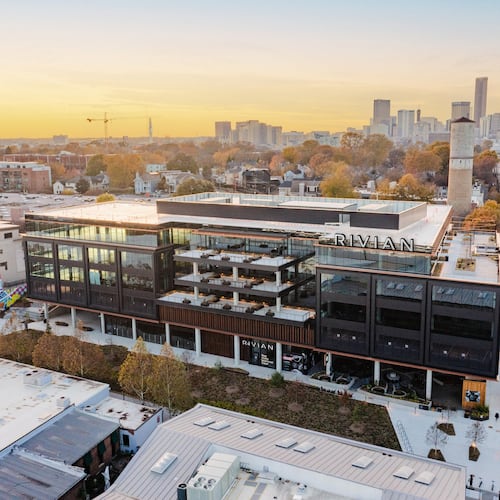Even before his death, Roger Malcom’s grandmother had begun making arrangements for his funeral.
Malcom, 24, was being held at the Monroe jail, charged with stabbing a white farmer, Barney Hester. Although Hester would survive, it was clear to most of Walton County’s black community that Malcom would not.
Dora Malcom had asked Dan Young, a Monroe mortician and one of the area’s most prominent African-American businessmen, to tend to tend to her grandson’s body. Young tried to reassure her that wouldn’t be necessary to use hsi services, unaware that a group of white supremacists were already plotting Malcom’s execution.
Five days later, on July 25, 1946, the mortician received a call from Walton County sheriff’s informing him four bodies needed to be collected: Roger Malcom, Malcom’s pregnant wife, Dorothy, and another black couple, George and Mae Murray Dorsey.
The group, ranging in age from 20 to 28, had been shot more than 60 times at Moore’s Ford Bridge on the Walton/Oconee county line by anywhere from one to two dozen white vigilantes.
Loy Harrison, the white farmer and known bootlegger who had posted Malcom’s $600 bond, told investigators he was driving the four sharecroppers home to work on his property. He never explained why he took the least direct route — a secluded dirt road just off the Atlanta-Athens highway.
Several carloads of men were waiting for them, according to various accounts. It was around 5:30 p.m., less than an hour since Malcom’s release from jail. According to Harrison, a “big man in a double-breasted suit” gave the orders to kill.
“He pointed to Roger and said, ‘We want that [racial epithet],’ ” Harrison said in an account later reprinted by Time magazine. “Then he pointed to George Dorsey, my [racial epithet], and said, ‘We want you, too, Charlie.’ I said, ‘His name ain’t Charlie, he’s George.’ Someone said ‘Keep your damned big mouth shut. This ain’t your party.’”
They dragged the couples from the car, sexually mutilated Malcolm and tied all four to a nearby tree. The shotgun blasts that followed echoed across the rural landscape like a fire sweeping through the thick reeds that grow along a river, according to one witness’ account.
Eleven days earlier, Roger Malcom had gotten into a drunken argument with Hester, whom he suspected was having an affair with his wife. Hester, 22, was stabbed in the chest.
George Dorsey wasn’t even in Walton County that day — he returned home from his service in the Pacific theater of World War II two days after the stabbing.
Word of the lynchings spread fast. Newspapers across the globe retold the grim account of what happened that Thursday afternoon on the banks of the Apalachee River. Some, such as the Afro-American in Baltimore, published photos of the dead bodies.
That two of the victims were women, and another a veteran, only fueled the outrage. According to Laura Wexler, author of “Fire in a Canebrake: The Last Mass Lynching in America,” the White House received scores of telegrams — at the rate of one every two minutes — condemning the killings.
President Harry S. Truman dispatched 20 FBI agents to Walton County where they encountered massive resistance. Whites protected the killers while blacks were too afraid to talk.
“Even the best people of the county seem afraid to talk and can’t help us,” GBI director William E. Spence said at the time.
The FBI identified 55 suspects but none of them were ever indicted due to a lack of physical evidence.
Years later, it was revealed the FBI investigated suspicions that Eugene Talmadge, the three-term, segregationist governor of Georgia, sanctioned the murders.
Talmadge, according to FBI files released in 2007, visited Monroe two days before a closely contested Democratic gubernatorial primary. Malcom had stabbed Hester the day before, and Talmadge, the incumbent, allegedly met with his brother, George Hester.
In a memo to FBI director J. Edgar Hoover, the agent in charge of the Moore’s Ford investigation said a witness told him Talmadge offered immunity to anyone “taking care of the negro.”
The governor ended up winning Walton County by roughly 200 votes. Within a year, the FBI closed its investigation, and it would be another 46 years before new leads emerged.
“We got to the edge of the woods, and we saw all these people down there. Man, and they were just having a fight out of this world,” Clinton Adams, 10 years old at the time of the shootings, told The Atlanta Journal-Constitution in 1992.
The sharecropper’s son said he watched the men drag George Dorsey from a car, tie his hands, “and then they hit him over the head with a pistol barrel.”
“Then these guys just walked up behind them and shot them,” Adams said. “There were four shooters initially. Then, when they fell to the ground, these men just stood over them, shooting into the bodies and up in the trees.”
Loy Harrison was among the shooters, he said.
Adams’ account was later called into doubt by Wexler after she discovered several inconsistencies between his version and the FBI’s findings. She later interviewed him and said details of his story had changed.
Now, more than 20 years later, another Walton County resident has come forward with information about the killings. Wayne Watkins, in a April 2013 interview with then-NAACP president Ben Jealous, said a relative, a member of the Ku Klux Klan, was among the mob that killed the Malcoms and Dorseys. At least 5 of the men were still alive, Watkins said.
Substantiating his claims won’t be easy, and heresay evidence isn’t enough to bring the case to trial.
About the Author
Keep Reading
The Latest
Featured



